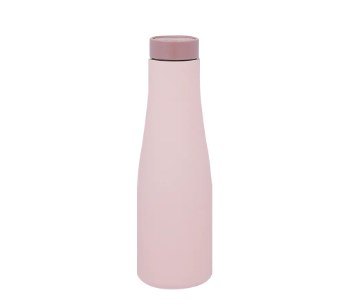The stainless steel thermos bottle has long been a favorite among consumers for its ability to keep beverages hot or cold for extended periods. However, one of the most critical aspects of a thermos bottle is its sealing performance. A good seal ensures that the contents remain fresh and uncontaminated and that there are no leaks to worry about. In this article, we will delve into the factors that contribute to the exceptional sealing performance of stainless steel thermos bottles.
Firstly, the material itself plays a significant role in the effectiveness of the seal. Stainless steel is a durable and non-corrosive material, which means that it does not rust or degrade over time. This durability contributes to the longevity of the seal, as the material does not wear out or become compromised, ensuring a consistent and reliable seal throughout the life of the bottle.
Secondly, the design of the stainless steel thermos bottle is crucial. Many models feature a double-walled construction, which not only provides insulation but also adds an extra layer of protection against leaks. The space between the walls is often vacuum-sealed, creating an airtight environment that prevents any leakage.
The lid of a stainless steel thermos bottle is another critical component in its sealing performance. High-quality lids are often made from materials that can withstand temperature changes and maintain their shape, such as food-grade plastic or silicone. These lids are designed to create a tight seal with the bottle's mouth, preventing any spills or leaks. Some thermos bottles also feature a screw-on mechanism, which, when tightened, ensures a secure fit and an even better seal.
The gasket is another essential element in the sealing process. Many stainless steel thermos bottles come with a silicone or rubber gasket that sits between the lid and the bottle's mouth. This gasket conforms to the shape of the bottle, creating a watertight seal. Over time, the gasket may wear out or become less effective, but it is usually replaceable, allowing users to maintain the sealing performance of their thermos bottle.
Another factor to consider is the user's handling of the stainless steel thermos bottle. Even the best-designed bottles can leak if not properly closed or if they are subjected to excessive force or impact. To ensure the best sealing performance, users should follow the manufacturer's instructions for use, including how to properly close and tighten the lid.
Temperature changes can also affect the sealing performance of a stainless steel thermos bottle. Sudden temperature shifts can cause the air inside the bottle to expand or contract, potentially leading to leaks. To minimize this risk, users should avoid exposing their thermos bottle to extreme temperature changes and allow hot liquids to cool slightly before placing them in the bottle.
In conclusion, the sealing performance of a stainless steel thermos bottle is a result of several factors, including the material, design, lid, gasket, and user handling. By understanding these factors and taking proper care of the bottle, users can enjoy a leak-proof and reliable beverage storage solution. The stainless steel thermos bottle's ability to maintain a tight seal is a testament to the thoughtful engineering and quality materials that go into its construction, making it a preferred choice for those seeking a durable and efficient way to keep their beverages at the perfect temperature.



